 |
| Source: all photos related to this gun are by the author. |


- French Model 1763 (+/-) “Charleville” musket lock marked “Maubeuge Manuf. Rle.”
- Barrel may be from the same type, but cut down to about 36”.
- Stock is probably American maple, having almost the form of a rifle stock.
- Trigger guard and lower ramrod pipe are from a British Brown Bess and possibly the buttplate.

 |
| (Source) |

 Gurkhas attack an Axis position in Tunisia during World War II. One soldier has his kukri knife drawn. Image: Austrian National Library/Public Domain
Gurkhas attack an Axis position in Tunisia during World War II. One soldier has his kukri knife drawn. Image: Austrian National Library/Public Domain
Since History’s Forged in Fire debuted in June 2015, a fan favorite has been the “kukri,” a knife that various blade makers describe as an ideal chopper. The curved knife is also sold online, marketed as everything from a zombie killer to a prepper survival knife. At least one online description suggests it is a “hardcore utility knife.”
While we can’t speak to its zombie-killing abilities, its use as a utility knife is absolutely correct. However, a lot more of its story is left out. That includes its origins in the Central Asian nation of Nepal and its use as a combat blade of the famed Gurkhas. There is also no shortage of misinformation about the kukri.
Must Draw Blood When Drawn?
One of the most notorious tales is that when drawn by a soldier, it must draw blood. That’s not true, although there are tales of Gurhkas nicking their thumbs, but likely done to perpetuate the blade’s mystique.
Author David Bolt, in his 1967 history of the famed warriors, Gurkhas: Pageant of History (Delacorte Press, New York), may have summed up the concise background of this almost mythical knife:
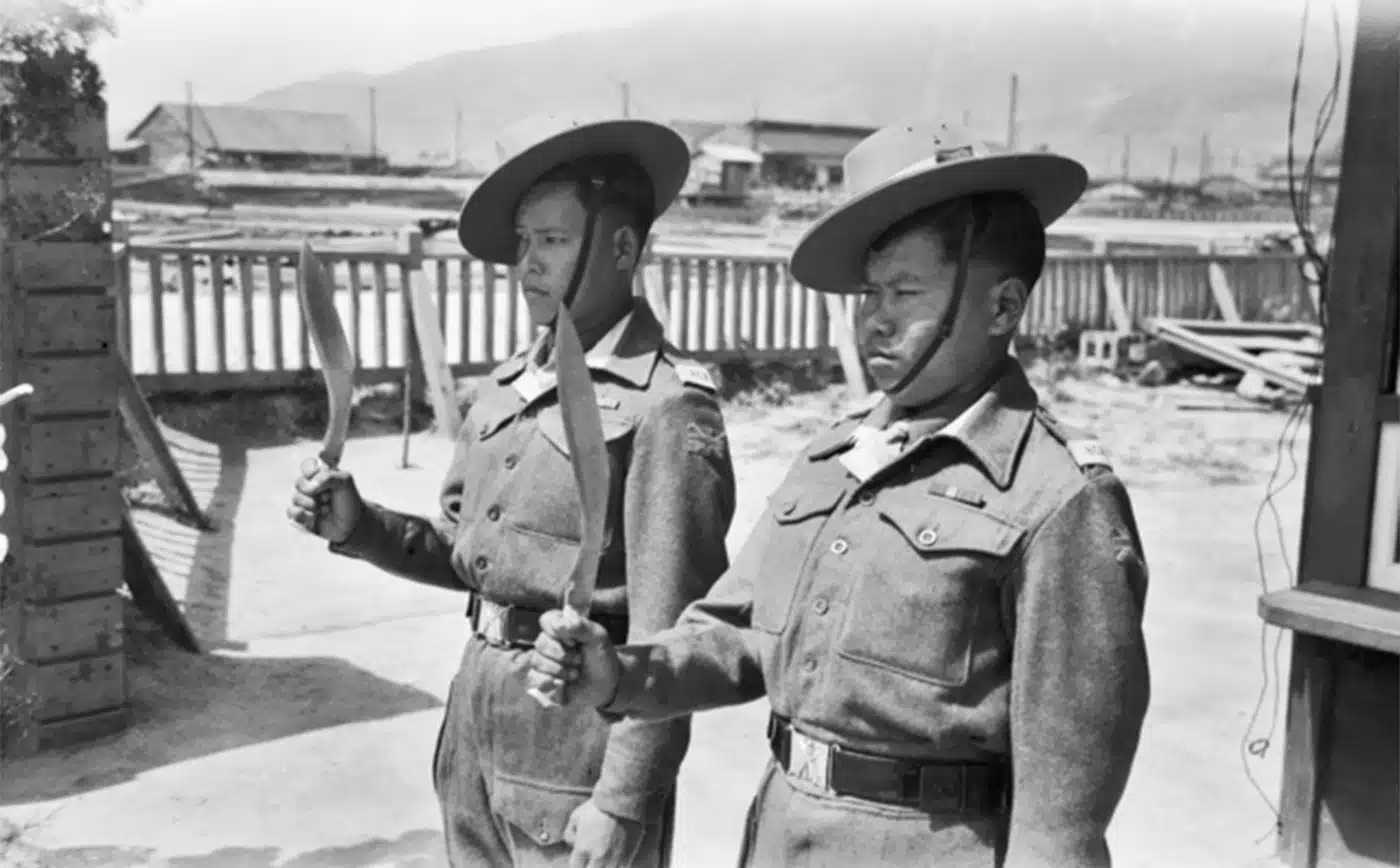
“Among the ancient weapons preserved in the Arsenal at Katmandu is an old, forward curving Mall knife measuring some fifteen and a half inches. Enlarges to eighteen or twenty inches, and with a more marked curve to the blade, it becomes the modern kukri — the famous and deadly hand-weapon of the Gurkha soldier.
Many myths have grown up around the kukri: that the Gurkha can never unsheathe it without drawing blood, for example. But the truth is that, apart from its undoubted and formidable use in the hand of the Hillman as a weapon, it serves a thousand one everyday purposes from chopping wood to opening cans, or slaughtering poultry and goats for the pot.”
In other words, as it was as much a utility knife as a combat weapon, blood need not be drawn. Unless one counts the blood from the birds and goats!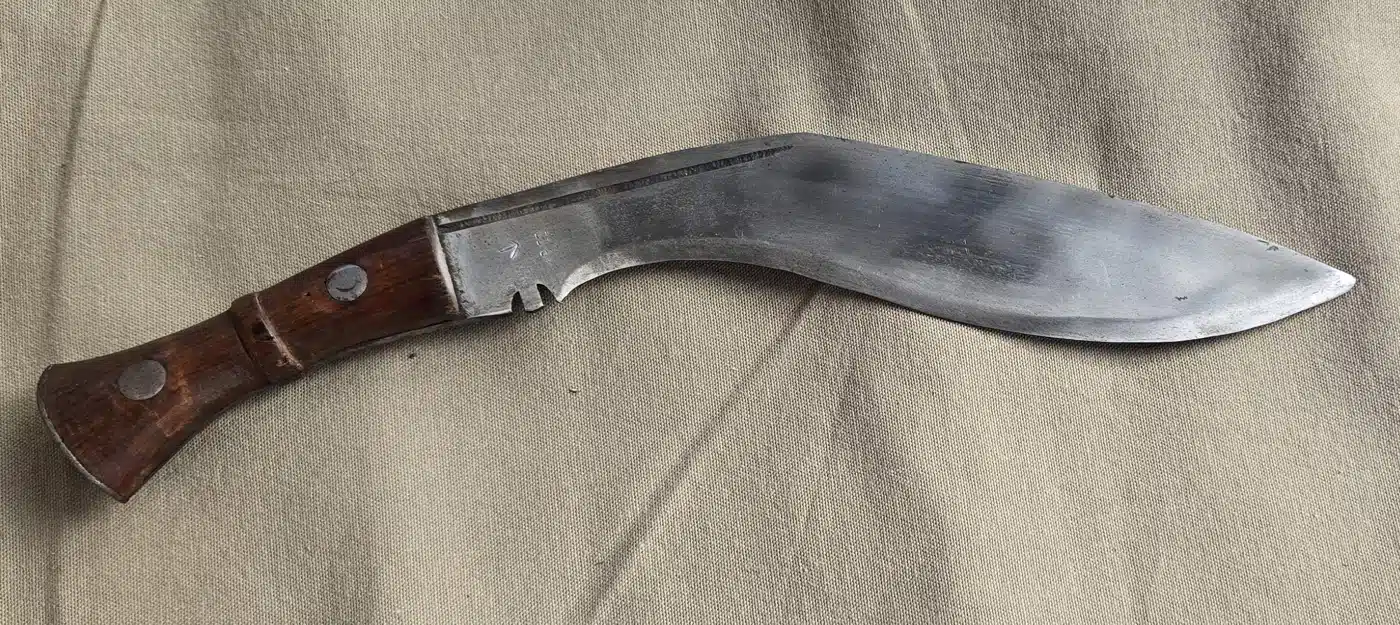
“Though technology has advanced through the centuries, Gurkhas have carried kukris into every major conflict where the British Army has been deployed,” explained the Gurkha Welfare Trust, the advocacy group for retired Nepalese soldiers who served in the British Army. “Gurkhas can use their kukris to chop or carve wood, cut meat and vegetables, dig, and hunt wild animals. The famed knife also has ceremonial uses in weddings and other formal events.”
Who Are the Gurkhas?
The curved kukri was infamous among collectors, historians and even preppers long before the knife got the full-on mainstream attention in a reality TV show. Blade enthusiasts likely know at least part of the story. The kukri is, of course, the weapon of the Gurkhas, but it’s also the most enduring symbol of the professional soldiers, as seen on military cap badges, uniform buttons and flags. Understanding the history of the knife requires some background on the Gurkhas and the Nepalese people.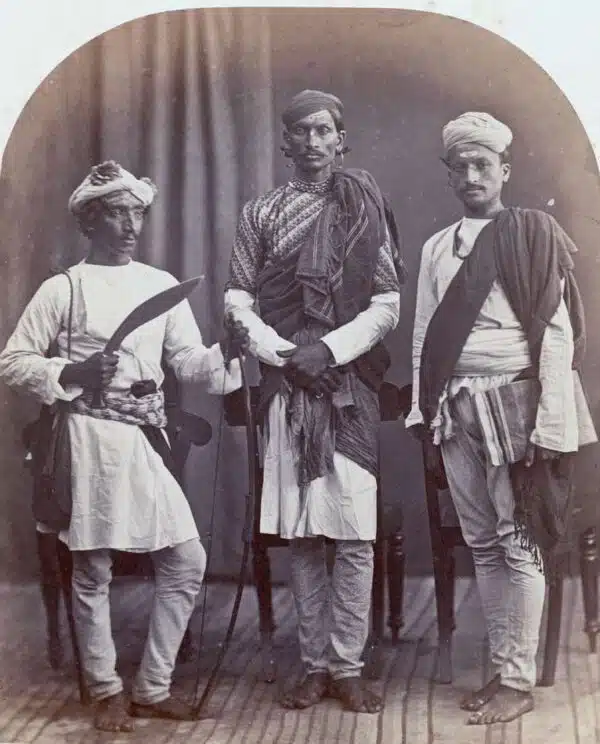
Today, the Gurkhas form the core of the Nepalese Army. But they are also, in essence, mercenaries, fighting for the British, Indian and Singapore armies, while also serving as part of the security force of Brunei.
One part of the story that is sometimes forgotten is that they were once a fierce foe of the British Empire.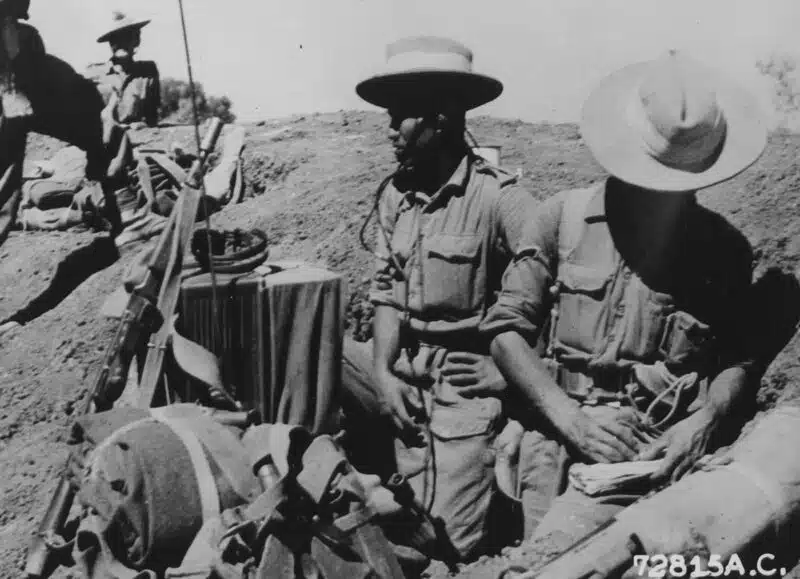
How the Gurkhas went from a formidable enemy to trusted ally is one that goes back to the early 19th century as the British East India Company (EIC) — known then as the “Honourable East India Company” or “John Company” — expanded its hold on the Indian subcontinent, which was far from a single nation. In addition to the Mughal Empire, there were hundreds of princely states.
The British East India Company maintained its own army, which recruited local troops, or Sepoys. There was always a need for more men as the company expanded its reach on the subcontinent.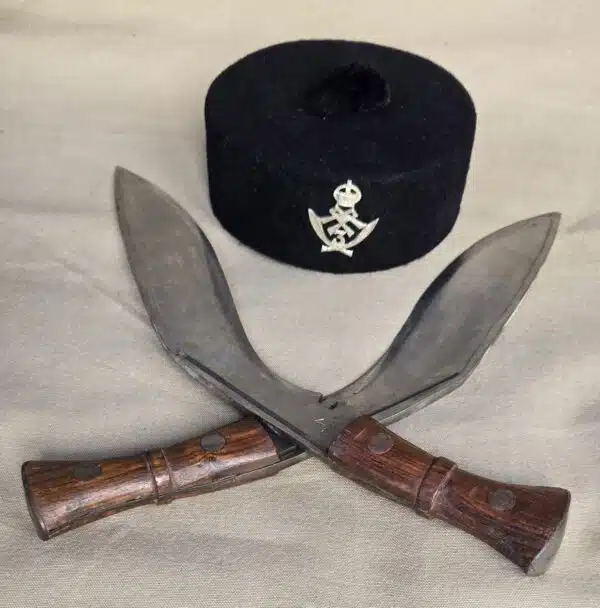
To the north was the Kingdom of Gorkha, and both the EIC and the Gorkhali Army had designs on the mountainous region north of India. That resulted in the Anglo-Nepalese War (1814 to 1816).
The EIC came out on top, though some lands were ceded to the Nepalese, who renounced claims to the disputed territory. Though Nepal was never formally colonized by the British, the two nations became close partners.
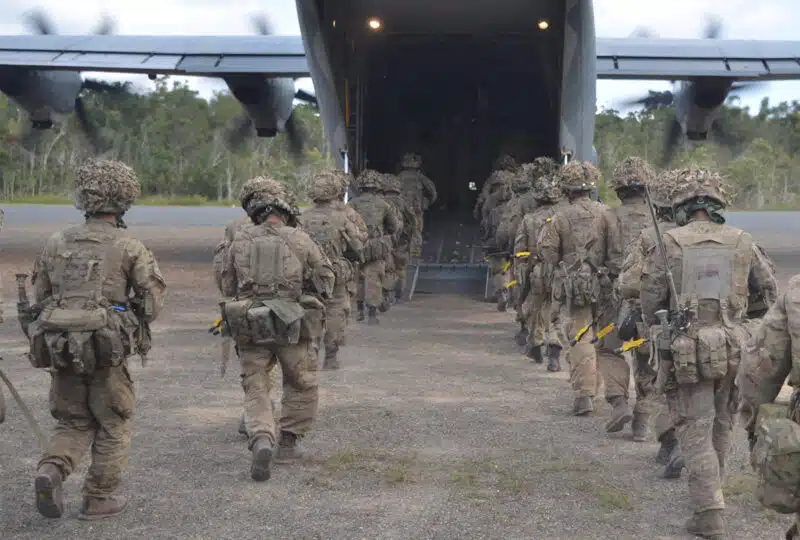
More importantly, the British saw the capabilities of the native warriors, as many were recruited, eventually forming a battalion. It became the 1st King George’s Own Gurkha Rifles as part of the British East India Company’s Bengal Army.
Beyond India, the British had long recruited foreigners, and that largely included Germans, who fought under the Union flag in America and against Napoleon. Today, the Gurkhas are the last of the UK’s foreign soldiers who serve in the ranks of the British Army.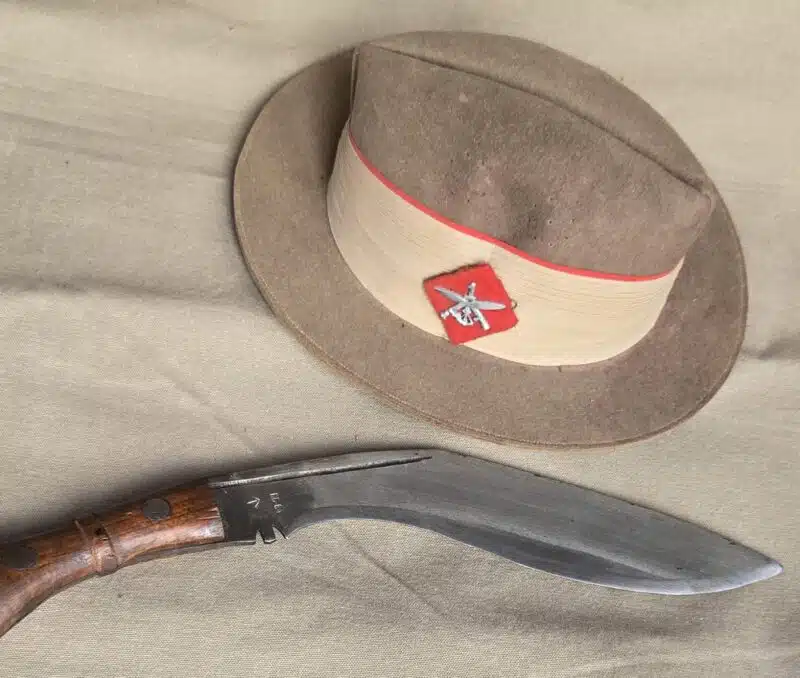
It is beyond the scope of this article to offer a history of the Gurkhas from that point, but suffice it to note that the Nepalese soldiers fought side-by-side with the British Army in India during the 1857 mutiny, in numerous colonial wars in Africa and the Far East, during the First and Second World Wars, the Falklands War, and even into the Global War on Terror in Afghanistan and Iraq.
It should also be noted that after India became a crown colony following the mutiny, the Gurkhas became part of the British Indian Army, and by the time of India’s independence and partition, there were 10 regiments of the Nepalese fighters.
Four of those were transferred to the British Army while India maintained six Gurkha regiments and those units — including the modern 1st Gorkha Rifles (The Malaun Regiment) — have taken part in India’s wars against its neighbor and regional rival Pakistan
The bravery of the Gurkhas could be summed up best by Field Marshal Sam Manekshaw (1914-2008), former chief of staff of the Indian Army, who suggested, “If a man says he is not afraid of dying, he is either lying or he is a Gurkha.”
The Kukri — More Than a Weapon
While kukris are available in a variety of sizes, there is no standard shape or angle of the blade, apart from the military versions, which we will get to. Likewise, today composite handles are available, but over the centuries, there have been bone, ivory, and various wooden handles.
The quality of modern kukris ranges from tourist trade junk to ornate presentation pieces to modern utility blades, but all can trace their origin back to the knives of the Nepalese tribal peoples.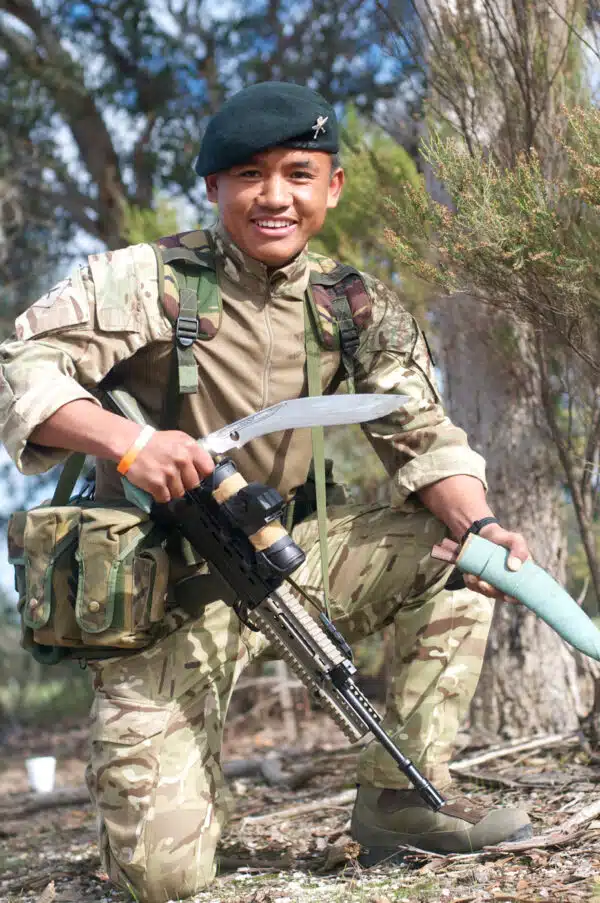
Curved blades have long been common in the Indo-Persian region, but normally with the sharp edge on the outer curve. The kukri is unique in that the edge in on the inner curve, and it likely evolved from a regional version of the sickle, while there is evidence it could have derived from the nistrimsa, an ancient Indian saber, or even the Greek kopis that were carried by the forces of Alexander the Great during his wars in India in the 4th century BC. It is certainly easy to see the kukri as an evolution of the kopis, yet that may not be the case.
As noted by David Bolt, the oldest known examples — dating to the middle of the 16th century during the rule of Drabya Shah — are in the National Museum of Nepal. It would be hard to imagine that other examples made in the 2,000 years in between haven’t been discovered, so it may be a case of the “wheel being reinvented.”
As with many combat knives, the kukri also evolved over the centuries with countless variations. Yet, sources agree on two things. First, the basic versions were used as much for utility, chopping and cutting, as for combat. Second, in combat, when wielded by a skilled warrior, it was a feared weapon. Although some of the myths do verge on hyperbole.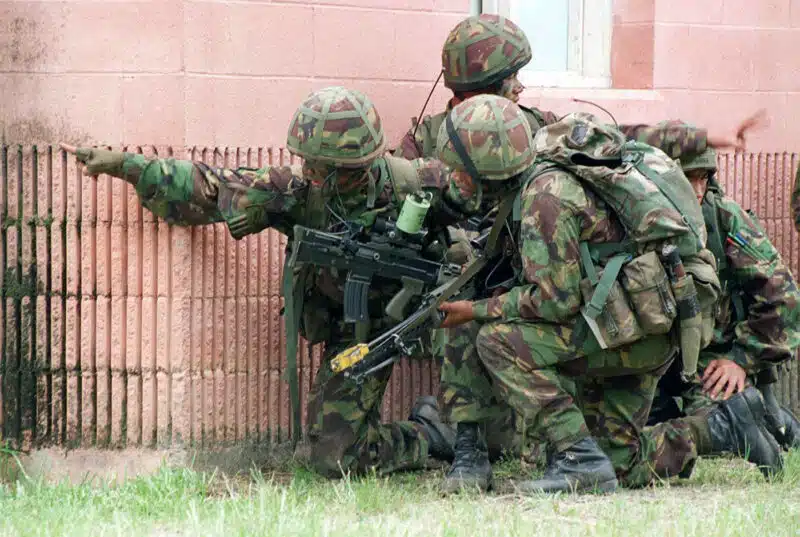
Sources describe that the kukri could be capable of removing an enemy’s head in a single swipe, and that it was a weapon feared by the Japanese during World War II. Given the size of the weapon and the average Nepalese, it is hard to believe a normal-sized Gurkha swinging the sharpest of single-handed knives could cut a head off of any enemy unless it was a goat or more like a chicken!
It, therefore, might be more accurate to say that the Japanese soldiers, who were taught (and at times literally had it beaten into them) that they were superior fighters to the British, came to respect the Gurkhas in the fighting in Burma. Likewise, it is noted that at the Battle of Tobruk in North Africa in 1942 against the Germans, many of the 2nd Battalion of the 7th Gurkha Rifles fought until the very last round, before the unit was ordered to surrender.
Other stories talk of its use in the trenches of the First World War, where the Gurkha armed with the kukri was hated by the Germans. Again, that may be a bit of hyperbole, as that conflict saw the use of all sorts of insidious melee weapons. Yet, the truth is that it was an effective close-quarters weapon for centuries due to its compact size and ability to deliver deadly blows. As opposed to thrusting weapons, some experts have suggested it requires far less skill, but that isn’t to say the Gurkhas were unskilled in the least. Far from it, as the Gurkhas knew how to use the short curved blade to its maximum efficiency.
Military Kukris
As part of the Gurkha’s uniform, which followed that of the British East India Company and later the British Indian Army of the 19th century, and included a pillbox cap (Kilmarnock cap) later replaced by the now distinctive felt slouch hat, the kukri was adopted as the soldiers’ fighting knife.
This is where the famed knife became a bit more “uniform” in design.
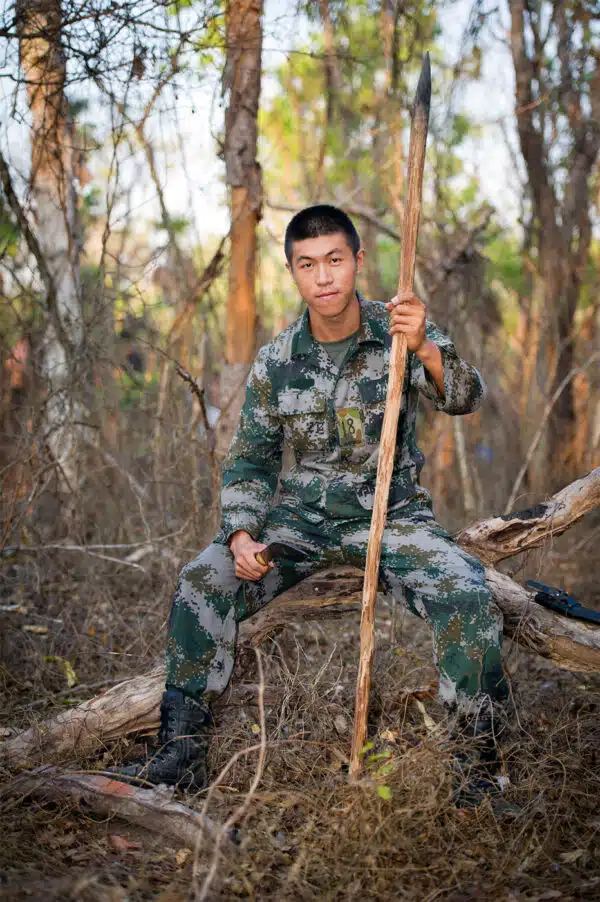
Interestingly, while hand-forged blades had been made in Nepal for centuries, the ones used by the Gurkha regiments from the middle of the 19th century to the middle of the 20th century were largely produced at factories in India. There are stories of “personnel” or “family” kukris being carried, but that should be taken with a grain of salt.
The kukri used in the two World Wars (which isn’t that dissimilar from those in service today) had an overall length of about 17 inches, with a blade of about 13 inches. The blade has a tempered edge and softer spine, which enhance its chopping abilities. Unlike “traditional” versions, the military ones featured a full tang, while still retaining a notch at the base of the blade. Its purpose is something even Gurkhas can’t agree on, as some say it resembles the hoof of a cow, which is a sacred animal for the primarily Hindu Nepalese, but also that it could help drain fluids away from the handle.
The handles of the ones used by the Gurkhas during the World Wars are hardwood, stained brown, and held to the tang by two large pins. The blade is also marked with the British “broad arrow” stamp, meaning it was official military equipment.
A leather-covered wooden scabbard held the kukri along with two miniature utility knives, which were used for sharpening and skinning, respectively. Each resembles a mini kukri with slightly less bend to the blade.
In military service, the kukri was more than a combat weapon. It was very much a utility knife, used for chopping wood, clearing undergrowth, and in a pinch, it could be used as a hammer to pound in nails. Generally, Gurkhas had two kukris, one that was for daily use and another that was highly polished and used in drill and ceremony.
Kukri in Popular Culture
The kukri has appeared in a number of movies and TV shows. Notably the weapon was carried by the character Billy Fish in 1975 film The Man Who Would be King starring Sean Connery and Michael Caine, while more recently the weapon is seen prominently in the 2023 release 1915: Legend of the Gurkhas about a Nepalese soldier fighting in the trenches of the Western Front during the First World War. It can also be seen carried by Bronn, the “sellsword” on HBO’s Game of Thrones.
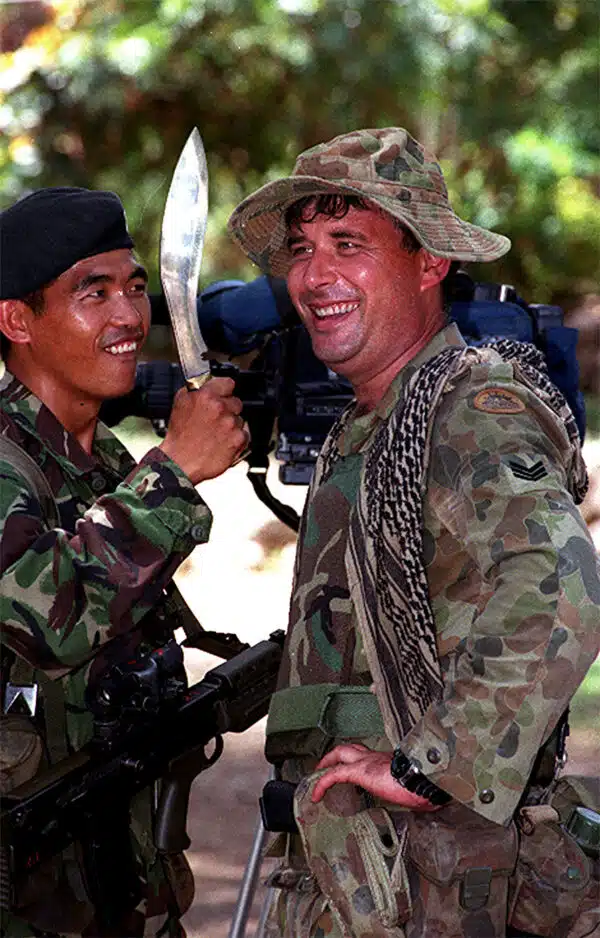
Surprisingly, while it is sold online today as an anti-zombie weapon, its roots in Gothic horror date back more than a century. Just as Forged in Fire put the kukri in the modern spotlight, the knife gained a level of infamy following the release of Bram Stoker’s Dracula in 1897. In the original novel (and 1992 film version), the main protagonist, Jonathan Harker, used a Nepalese kukri to cut off Dracula’s head — and yet it is the stake in the heart that has become synonymous with vampire killing!
SHORE PATROL
A nightmare?
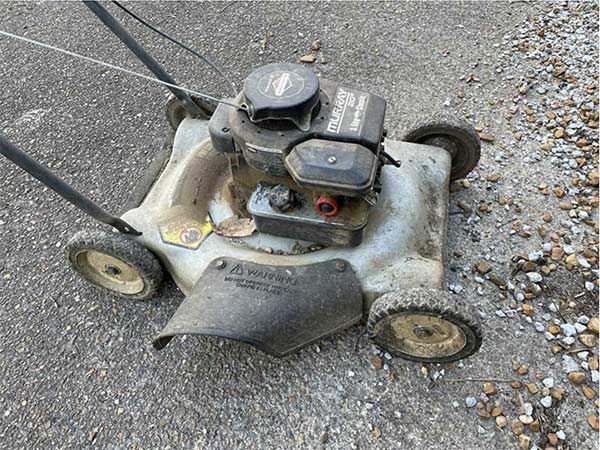
My grandfather’s old antique lawnmower is unkillable.
As a card-carrying man, I have little use for safety stuff. I have an antique lawn mower I inherited from my grandfather. Everything on it is pressed steel, and there are no extraneous safety gadgets. It is unkillable. I mean, even though it is 30 years old, that thing simply will not die. It is an indestructible, immortal grass-cutting miracle machine.
By contrast, modern lawnmowers are mostly plastic and include 75 different guards and safety interlocks, all designed to keep American males from doing stupid things … like cutting their grass. Believe it or not, I would have shut the mower off before reaching my hand into it anyway. Apparently, however, not everybody looks at life as I do.
In ages past, there were not so many trial attorneys, and OSHA was just some nonsensical collection of random letters. I often look back longingly to those hallowed days. I must admit, however, that things were somewhat more dangerous back then.
 Sawmills of yesteryear were incredibly dangerous.
Sawmills of yesteryear were incredibly dangerous.
Example 1
One of my grandfathers worked in a sawmill back during the Great Depression. Those who had work generally did okay. Those that didn’t ran a legitimate risk of starvation. It was simply that not a whole lot of folks had work. In the sawmill where my grandfather toiled, they had multiple machines all powered by a single big honking engine.
This was a fairly sizable place, so the technical problem was how to get that mechanical energy from its source, something steam driven I presume, to the individual machines. The solution was a series of drive shafts that traversed the space on mechanical hanger bearings oriented perhaps a foot off the floor. A short belt drive then ran from the shaft to the individual machines on the far end. To traverse the workspace, one carefully stepped over the rapidly spinning shafts.
One of my grandfather’s coworkers was walking across the shop when his pants leg brushed one of the drive shafts. This particular shaft had a prominent setscrew that grabbed the cloth of his heavy denim trousers. By the time they got the power shut down, the poor man was irretrievably wrapped around the shaft. He was killed instantly.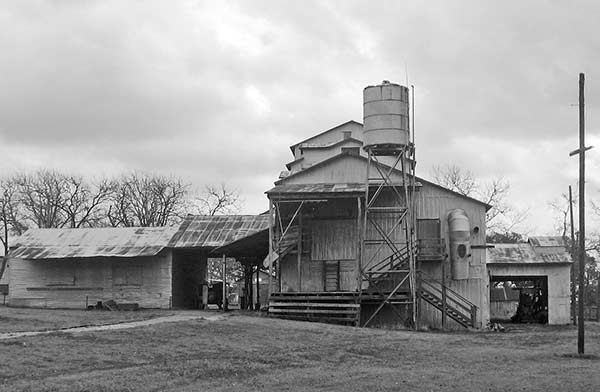
My grandfather’s old cotton gin looked just like this one in Texas.
Photo by Jim Evans.
Example 2
My other grandfather owned a partial interest in a cotton gin back in the 1950s. The gin employed several local laborers and sported whirling machines aplenty. The standard uniform was bib overalls. As this was the Mississippi Delta, the place was forever hot.
I spent a little time in my grandfather’s gin as a wee lad. It was the evolutionary descendent of Eli Whitney’s inimitably inspired original. Steel spindles whirred about stripping cotton fibers from the seed. For an impressionable kid, it was all frankly terrifying up close. I recall a great deal of munching and grinding.
One of my grandfather’s employees crawled up on the running gin to rectify some problem or other. He naturally neglected to shut the thing down before mounting it. This was but a minor tweak and wouldn’t take a moment. That and he was a man.
You know what happened next? The edge of his pants leg also brushed part of the machine and got pulled into the gin. In this case, the man reacted instantly and latched onto a steel pole literally for dear life. The machine proceeded to rip his clothes off, demonstrating graphically to all involved his apparent disdain for underwear. The terrified man was rendered publicly naked but was otherwise unhurt.
Example 3
That same grandfather later took a job at an oil mill that produced cottonseed oil. Huge hopper trucks driven by local characters rolled into the facility to drop off seed for processing. One of the young drivers had an inexplicable aversion to bathing.
It was the cool part of the year, but this guy still reeked something awful. His coworkers avoided him. When required to be up close, they admonished him fervently to take a bath. Some helpfully brought him soap and offered the use of their facilities if needed. Throughout it all, as near as they could tell, this weird guy just liked being dirty.
Eventually, his comrades could stand it no longer. There was a modest pond on the facility that served some industrial purpose or other. The water contained therein was not drinkable, but it wasn’t industrial waste, either. This guy’s buddies dragged the poor man out of his truck and threw him into the pond along with a bar of soap. Humiliated, he duly stripped down, soaped up, rinsed off, and got dressed. Everyone in the facility was pleased with the final result. The following week, this strange man inexplicably contracted pneumonia and died.
Sometimes, it seems that our government’s sole raison d’etre is to place impediments in our paths to progress. Everything, everywhere, seems to be somehow government-regulated these days. However, there was a time when this was not the case. I have to admit that, in certain narrow circumstances, those were not necessarily the good old days.
